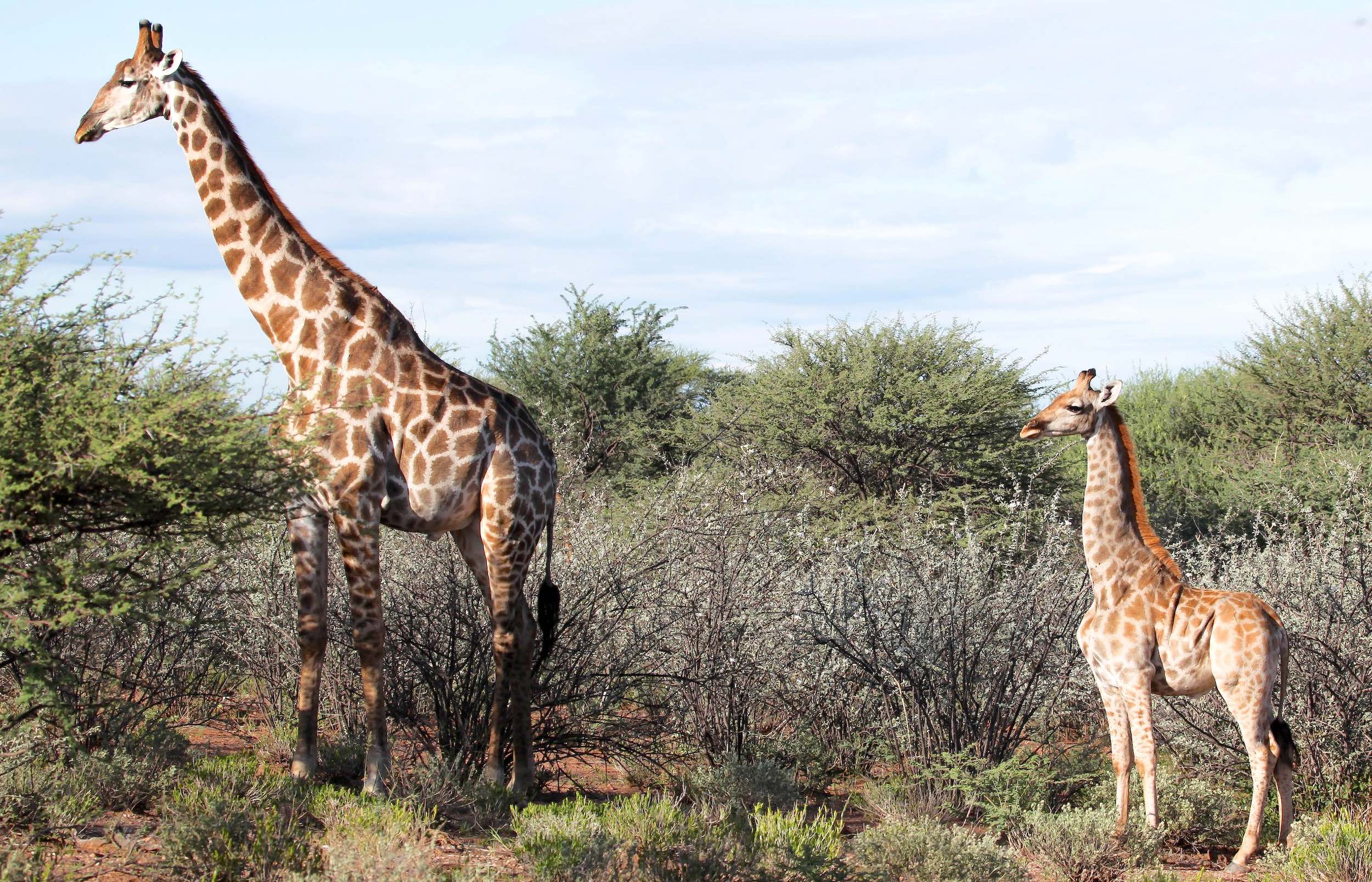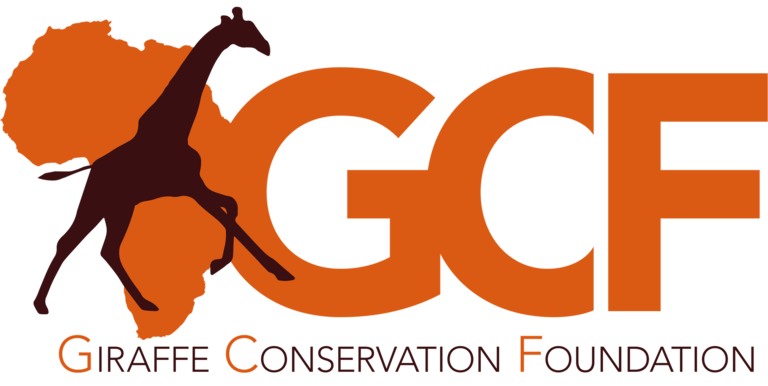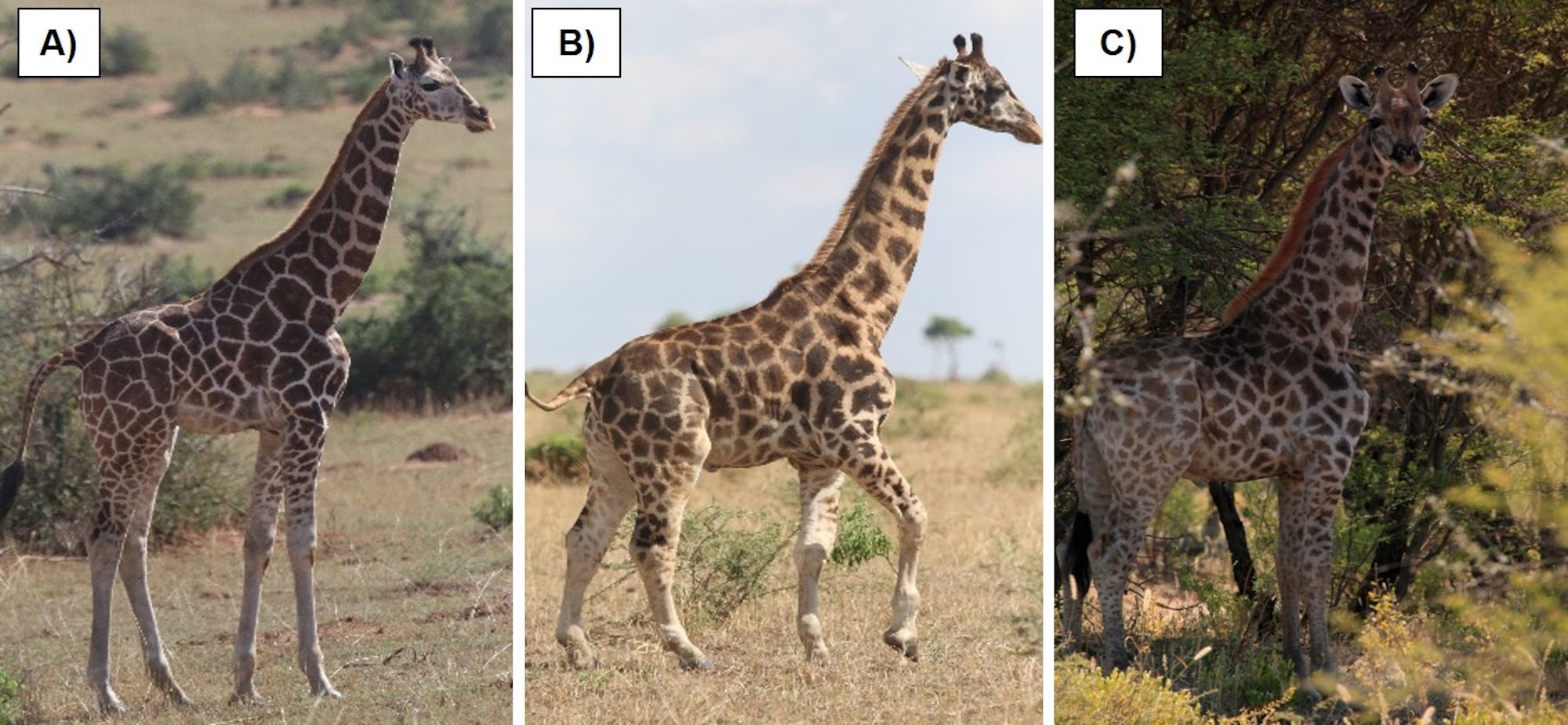

Dwarf giraffe - Seriously?!
29th January 2021
Research teams from the Giraffe Conservation Foundation (GCF) spend a lot of time looking at giraffe, but two particular giraffe recently caused them to do a double take. In amongst the other giraffe that they regularly monitor in Uganda and Namibia, they found two dwarves!
GCF's monitoring team in Murchison Falls National Park in Uganda saw their mini-giraffe
for the first time when he was still a young calf in December 2015, and spotted him again during annual surveys in 2016 and 2017. Meanwhile, another team in Namibia photographed a four-year-old giraffe on a private game farm in 2018 that was still the size of a calf! He was found again during their latest survey in July 2020. Each giraffe (dwarf or not) is identified by its unique coat pattern, so the researchers can follow individuals over time.
Being diligent scientists, the GCF teams do more than just watch the giraffe they find – they measure them using a clever, non-invasive method known as photogrammetry. Once calibrated to different camera focal lengths using objects of known sizes, one can get a fairly accurate measurement of giraffe legs and necks from suitable photographs. This means that the scientists can determine the growth rate of young giraffe and the average height and bone lengths of the giraffes in each population without having to sedate and physically measure any of them.

This technique certainly came in handy when studying the two dwarves (the Ugandan was nicknamed Gimli
after a dwarf from the Lord of the Rings, while the Namibian is known as Nigel
). Emma Wells, who led the Namibian GCF survey on the game farm notes: the Namibian farmer had spotted Nigel regularly over the years, it was only after our observations that he realised that Nigel was not a juvenile but a fully gown male giraffe. It is mainly in comparison to other giraffe that his difference in stature becomes obvious.
Although both giraffe were shorter than usual, different bones seemed to have been stunted in each case. While Nigel had a much shorter phalanx (ankle to hoof) bone than normal (4 cm shorter than the average of 20 cm for sub-adults), Gimli's phalanx was close to average. The next bone up (metacarpal – ankle to knee), however, was much shorter on Gimli (38 cm) than Nigel (51) cm, and both were well shy of the average 65 cm length. The knee to shoulder bone (radius) on both giraffe was about 20 cm shorter than the average. Nigel's neck was 24 cm shorter than the average 135 cm, but oddly enough, Gimli's neck was 11 cm longer than average!

Instances of wild animals with these types of skeletal dysplasias are extraordinarily rare
, observed Dr Michael Brown of the Ugandan GCF team. It's another interesting wrinkle in the unique story of giraffe in these diverse ecosystems.
This strange combination of bone lengths certainly makes dwarf giraffe stand out from the herd, but it has negative implications for their survival and reproduction. It is unlikely that either of them can reach a giraffe's top running speed of 60 km/h – Nigel even has an unsteady walking gait (see video below). The population of giraffe in Murchison Falls National Park in Uganda experiences low predation rates from lions, while the Namibian game farm has no lions at all, which explains why they have survived this long (although Gimli was last seen over three years ago). But being short in stature probably means that even if he reaches sexual maturity, a dwarf male giraffe is unlikely to have much luck with the ladies.


